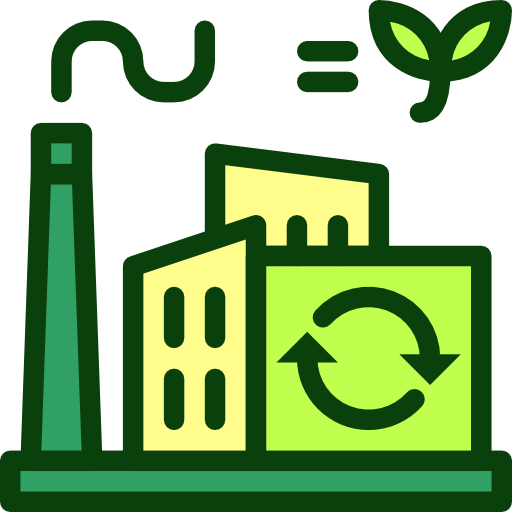Ethiopia - Geography

Here, let us take a look at the Geography of Ethiopia. The most populous landlocked country in the world; the Blue Nile, the chief headstream of the Nile by water volume, rises in T'ana Hayk (Lake Tana) in northwest Ethiopia. Mother's mean age at first birth is 19.3 years (2019 est.) (Note: data represents median age at first birth among women 20-49), whereas, the Maternal mortality ratio is 267 deaths/100,000 live births (2020 est.)
Geographical data of Ethiopia
| Location | Eastern Africa, west of Somalia |
|---|---|
| Geographic coordinates | 8 00 N, 38 00 E |
| Map references | Africa |
| Tarrain | high plateau with central mountain range divided by Great Rift Valley |
| Natural Resources | small reserves of gold, platinum, copper, potash, natural gas, hydropower |
| Natural Hazards | geologically active Great Rift Valley susceptible to earthquakes, volcanic eruptions; frequent droughts volcanism: volcanic activity in the Great Rift Valley; Erta Ale (613 m), which has caused frequent lava flows in recent years, is the country's most active volcano; Dabbahu became active in 2005, forcing evacuations; other historically active volcanoes include Alayta, Dalaffilla, Dallol, Dama Ali, Fentale, Kone, Manda Hararo, and Manda-Inakir |
| Irrigated Land | 1,814 sq km (2020) |
| Major rivers (by length in km) | Blue Nile river source (shared with Sudan [m]) - 1,600 km note: [s] after country name indicates river source; [m] after country name indicates river mouth |
| Major aquifers | Ogaden-Juba Basin, Sudd Basin (Umm Ruwaba Aquifer) |
| Land Boundaries | 5,925 km |
| Border Countries | Djibouti 342 km; Eritrea 1,033 km; Kenya 867 km; Somalia 1,640 km; South Sudan 1,299 km; Sudan 744 km |
| Coastline | 0 km (landlocked) |
| Climate | tropical monsoon with wide topographic-induced variation |
| Area | |
| Total Area | |
| Land Area | 1,096,570 sq km |
| Water Area | 7,730 sq km |
| comparative Area | slightly less than twice the size of Texas |
| Maritime Claims | |
| Elevations | |
| Highest point | Ras Dejen 4,550 m |
| Lowest point | Danakil Depression -125 m |
| Mean elevation | 1,330 m |
| Land Use | |
| Agricultural land | 34.1% (2022 est.) |
| Agricultural land: arable land | arable land: 14.5% (2022 est.) |
| Agricultural land: permanent crops | permanent crops: 1.8% (2022 est.) |
| Agricultural land: permanent pasture | permanent pasture: 17.7% (2022 est.) |
| Forest | 15% (2022 est.) |
| Other | 50.9% (2022 est.) |
Population Distribution
Highest density is found in the highlands of the north and middle areas of the country, particularly around the centrally located capital city of Addis Ababa; the far east and southeast are sparsely populated, as shown in this population distribution map
People and Society
In Ethiopia, the different Ethnic groups are such that we have: Oromo 35.8%, Amhara 24.1%, Somali 7.2%, Tigray 5.7%, Sidama 4.1%, Guragie 2.6%, Welaita 2.3%, Afar 2.2%, Silte 1.3%, Kefficho 1.2%, other 13.5% (2022 est.)
| Population | |
|---|---|
| Pop growth rate | 2.37% (2024 est.) |
| Birth rate | 29.6 births/1,000 population (2024 est.) |
| Death rate | 5.8 deaths/1,000 population (2024 est.) |
| Health expenditure | |
| Physicians Density | |
| Hospital bed Density | 0.3 beds/1,000 population (2016 est.) |
| Total fertility rate | 3.84 children born/woman (2024 est.) |
| Gross reproduction rate | 1.89 (2024 est.) |
| Contraceptive prevalence rate | 37.7% (2020) |
| Est married women (ages 15-49) | 67.5% (2023 est.) |
| Literacy | |
| Education expenditures | |
| Net Migration rate | -0.1 migrant(s)/1,000 population (2024 est.) |
| Nationality | Ethiopian | Ethiopian(s) |
| Languages | |
| Religions | Ethiopian Orthodox 43.8%, Muslim 31.3%, Protestant 22.8%, Catholic 0.7%, traditional 0.6%, other 0.8% (2016 est.) |
| Age Structure | |
| 0-14 years | 38.7% (male 23,092,496/female 22,765,882) |
| 15-64 years | 58% (male 34,175,328/female 34,536,238) |
| 65 years and over | 3.4% (2024 est.) (male 1,794,269/female 2,186,085) |
| Dependency Ratios | |
| Total dependency ratio | 72.5 (2024 est.) |
| Youth dependency ratio | 66.7 (2024 est.) |
| Elderly dependency ratio | 5.8 (2024 est.) |
| Potential support ratio | 17.3 (2024 est.) |
| Median Age | |
| Total | 20.4 years (2024 est.) |
| Male | 20.2 years |
| Female | 20.7 years |
| Urbanization | |
| Urban population | 23.2% of total population (2023) |
| Rate of urbanization | 4.4% annual rate of change (2020-25 est.) |
| Major urban areas (Pop) | 5.461 million ADDIS ABABA (capital) (2023). |
| Sex Ratio | |
| At birth | 1.03 male(s)/female |
| 0-14 years | 1.01 male(s)/female |
| 15-64 years | 0.99 male(s)/female |
| 65 years and over | 0.82 male(s)/female |
| Total population | 0.99 male(s)/female (2024 est.) |
| Infant Motality | |
| Total | 32.6 deaths/1,000 live births (2024 est.) |
| Male | 37.4 deaths/1,000 live births |
| Female | 27.6 deaths/1,000 live births |
| Life Expectancy at birth | |
| Total population | 67.7 years (2024 est.) |
| Male | 65.4 years |
| Female | 70 years |
| Drinking Water Sources | |
| Improved: urban | urban: 98.5% of population |
| Improved: rural | rural: 70.2% of population |
| Improved: total | total: 76.4% of population |
| Unimproved: urban | urban: 1.5% of population |
| Unimproved: rural | rural: 29.8% of population |
| Unimproved: total | total: 23.6% of population (2020 est.) |
| Sanitation facility acess | |
| Improved: urban | urban: 52.5% of population |
| Improved: rural | rural: 8.1% of population |
| Improved: total | total: 17.7% of population |
| Unimproved: urban | urban: 47.5% of population |
| Unimproved: rural | rural: 91.9% of population |
| Unimproved: total | total: 82.3% of population (2020 est.) |
| Alcohol consumption per capita | |
| Total | 1.16 liters of pure alcohol (2019 est.) |
| Beer | 0.92 liters of pure alcohol (2019 est.) |
| Wine | 0 liters of pure alcohol (2019 est.) |
| Spirits | 0.2 liters of pure alcohol (2019 est.) |
| Other alcohols | 0.03 liters of pure alcohol (2019 est.) |
| Tobacco use | |
| Total | 4.5% (2025 est.) |
| Male | 7.7% (2025 est.) |
| Female | 1.4% (2025 est.) |
| Child marriage | |
| Women married by age 15 | 14.1% (2016) |
| Women married by age 18 | 40.3% (2016) |
| Men married by age 18 | 5% (2016) |
Demographic profile
All Important Facts about Ethiopia
Want to know more about Ethiopia? Check all different factbooks for Ethiopia below.









